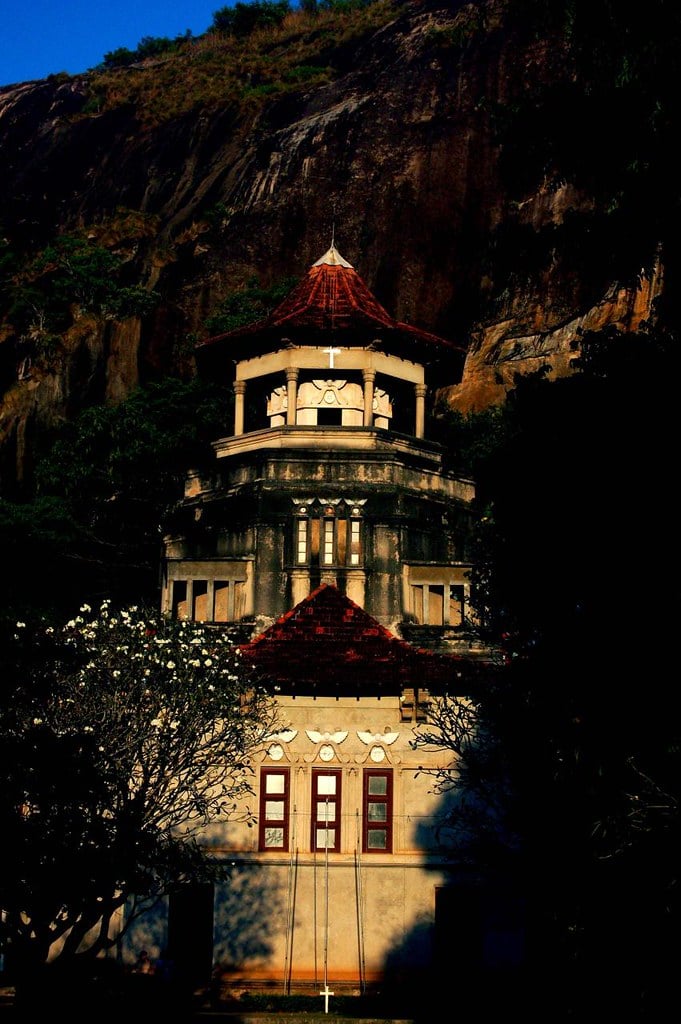Introduction
The Cathedral of Christ the King, situated on Kandy Road in Kurunegala, Sri Lanka, stands as a prominent landmark and the primary Anglican cathedral of the Diocese of Kurunagala, affiliated with the Church of Ceylon. With its rich history, architectural marvels, and significant religious symbolism, the cathedral serves as a testament to the Anglican heritage in the region. Let us delve into the intriguing story behind the construction, design, and artistic elements of this magnificent place of worship.
The Vision of Rt. Rev. Lakdasa De Mel
The construction of the Cathedral of Christ the King was made possible through the dedication and financial contributions of Rt. Rev. Lakdasa De Mel, the first Bishop of Kurunagala, and his family members. With an estimated cost of Rs 500,000, the construction began on 21 December 1950, coinciding with the feast of St. Thomas. The cathedral is situated on a 1.4-hectare (3.5-acre) site at the base of Ethagala (Elephant Rock), providing a picturesque backdrop for worshipers.
Architectural Marvels and Symbolism
The cathedral's architecture beautifully combines elements from the Polonnaruwa and Kandy eras, showcasing the essence of Sri Lankan history and culture. The nave, font, pulpit, and lectern were consecrated in 1960, while the chapel of the Blessed Virgin and St. Thomas the Apostle were consecrated in 1956. The construction primarily employs cement and reinforced concrete, providing a durable and lasting structure.
One of the cathedral's most striking features is the central tower, soaring to a height of 33 meters (108 feet), culminating in a majestic bronze cross. The brass lamps and communion rails exhibit intricate art motifs and lacquer work inspired by the traditional Kandyan tradition. Additionally, the cathedral proudly showcases the 'Cross of Anuradhapura' in brass, paying homage to the island's ancient religious heritage.
Interior Splendor and Artistic Significance
Inside the Cathedral of Christ the King, visitors are greeted with a display of the flags of the 'Disavas', representing the traditional districts that constituted the Diocese of Kurunagala. These flags, reproduced by Ena de Silva, serve as a tribute to the rich cultural diversity of the region and highlight the cathedral's connection to the local community.
A notable artistic feature within the cathedral is the modern painting by Nalini Marcia Jayasuriya, serving as the backdrop to the Lady Chapel. This artwork adds a contemporary touch while complementing the overall ambiance of the sacred space. Additionally, the fresco of Christ the King, painted by renowned artist George Keyt, evokes a sense of spirituality and reverence.
Grounds
Within the expansive grounds of the Cathedral of Christ the King, visitors will find several notable structures and facilities that contribute to the overall religious and community experience.
Bishop Lakshman Wickremasinghe Center
The Bishop Lakshman Wickremasinghe Center, located within the cathedral grounds, serves as a multipurpose facility for various activities and gatherings. Named after the esteemed former Bishop of Kurunagala, this center provides space for conferences, workshops, educational programs, and other events that enrich the lives of both parishioners and the wider community.
Devasevikaramaya
Another significant structure within the cathedral grounds is the Devasevikaramaya, which serves as one of the two indigenous monastic orders of the Diocese of Kurunagala. This monastic order plays a vital role in fostering spirituality, promoting religious education, and providing guidance to the Anglican community.
The Vicarage
The Vicarage, situated within the cathedral grounds, is the residence of the vicar or priest-in-charge of the Cathedral of Christ the King.
Bishop's Residence
Adjacent to the cathedral grounds, the Bishop's Residence stands as the official residence of the Bishop of Kurunagala. This distinguished building provides a residence for the bishop, who serves as the spiritual leader and overseer of the diocese. The Bishop's Residence serves as a hub for administrative functions, meetings, and engagements with the clergy and the wider community.
Conclusion
The Cathedral of Christ the King in Kurunagala stands not only as a place of worship but also as a symbol of Anglican heritage, architectural brilliance, and artistic significance. Its construction, funded by Most Rev. Lakdasa De Mel and his family, showcases the dedication and vision of those who played a crucial role in its establishment. The architectural fusion of Polonnaruwa and Kandy eras, the symbolic religious elements, and the incorporation of local artistic masterpieces make this cathedral a truly remarkable place of worship.
